Abstract
D-Mannitol has not so far been known as a major product of sugar metabolism by yeasts. Three yeast strains, a newly isolated yeast from soy-sauce mash, Torulopsis versatilis, and T. anomala, were found to be good mannitol producers. Under optimal conditions, the isolate produced mannitol at good yield of 30% of the sugar consumed. Glucose, fructose, mannose, galactose, maltose, glycerol, and xylitol were suitable substrates for mannitol formation. High concentrations of yeast extract, Casamino Acids, NaCl, and KCl in media affected significantly the mannitol yield, whereas high levels of inorganic phosphate did not show any detrimental effect.
Full text
PDF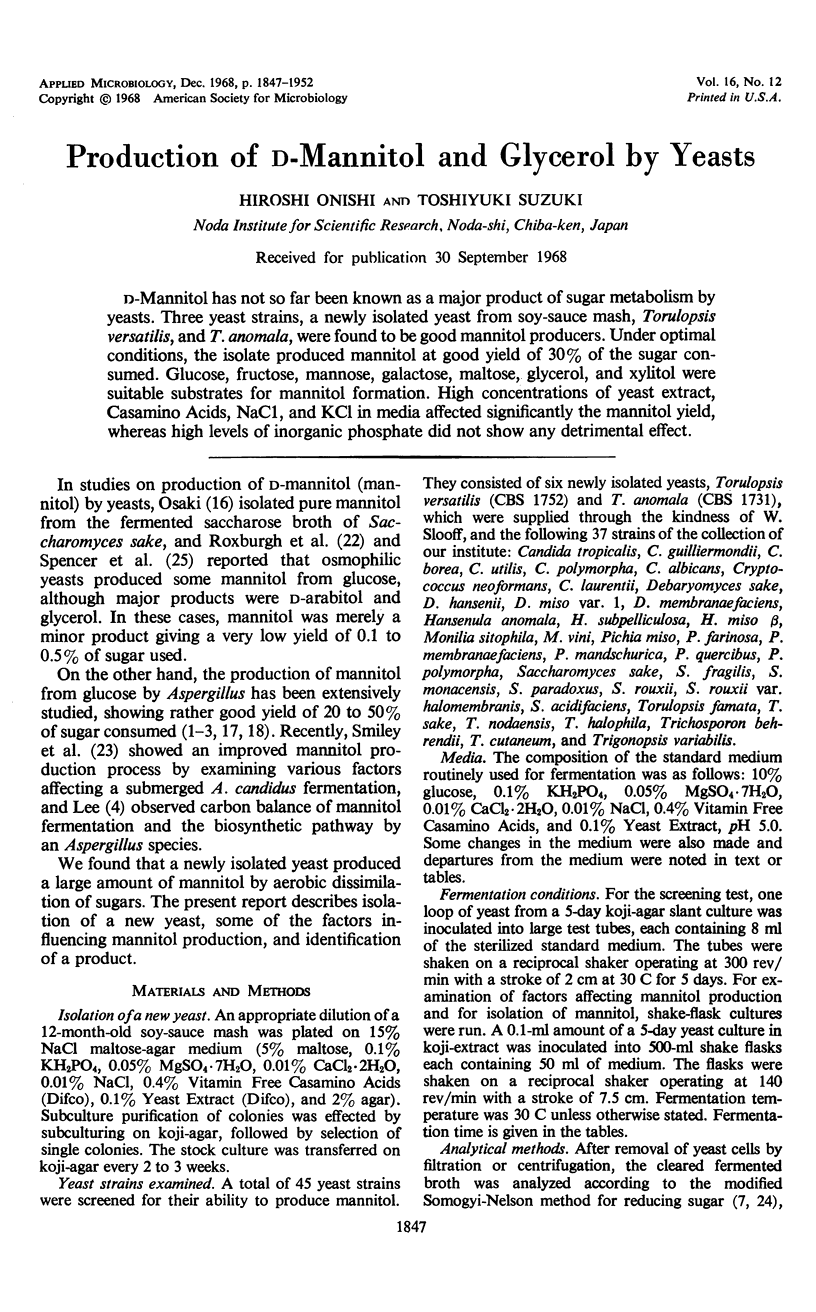
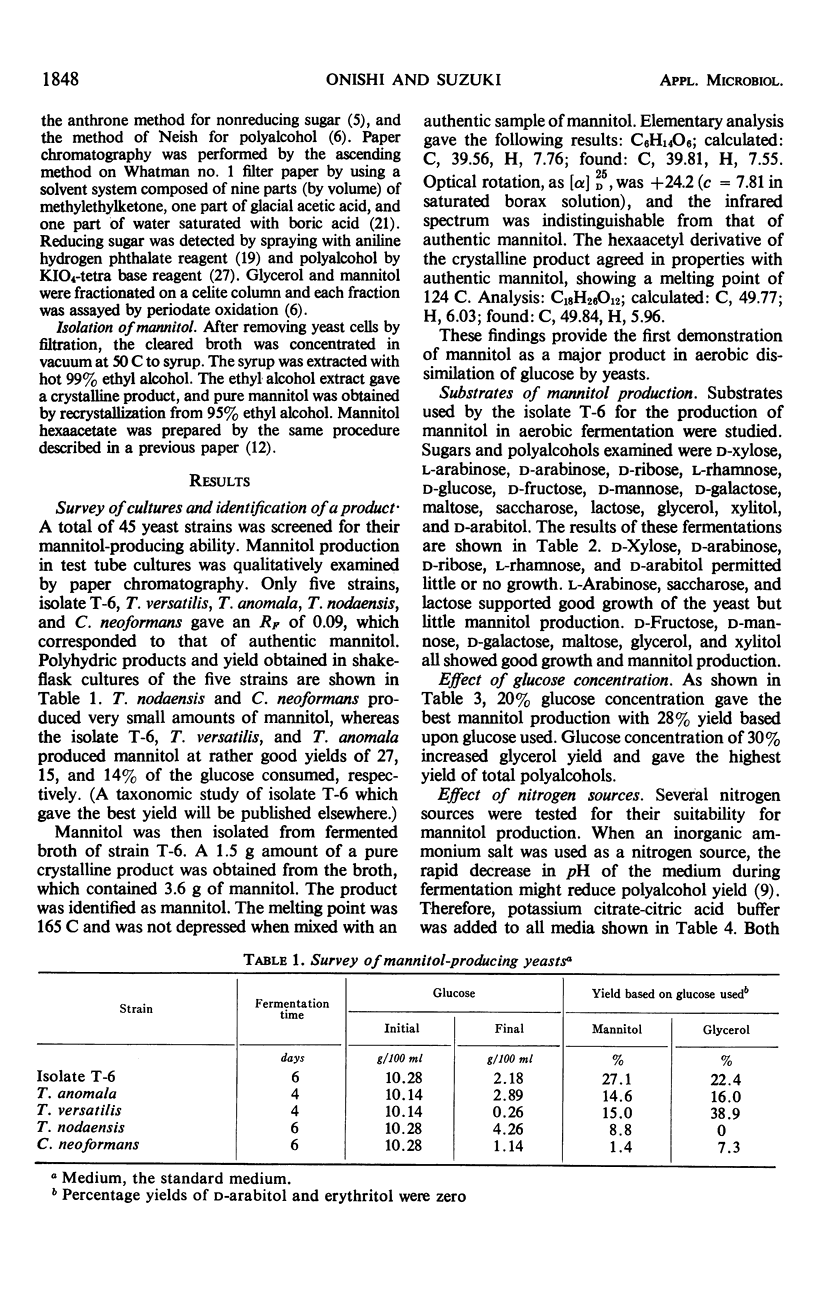
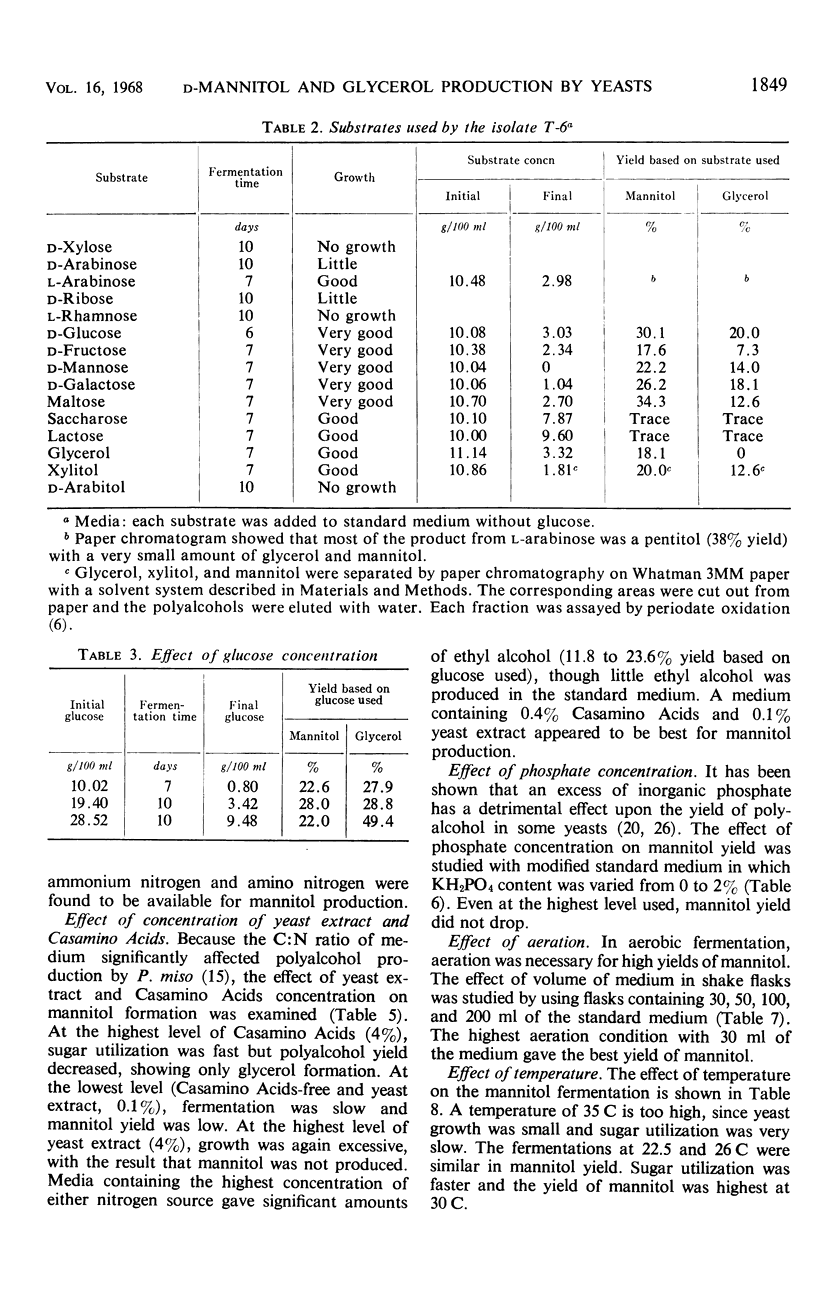
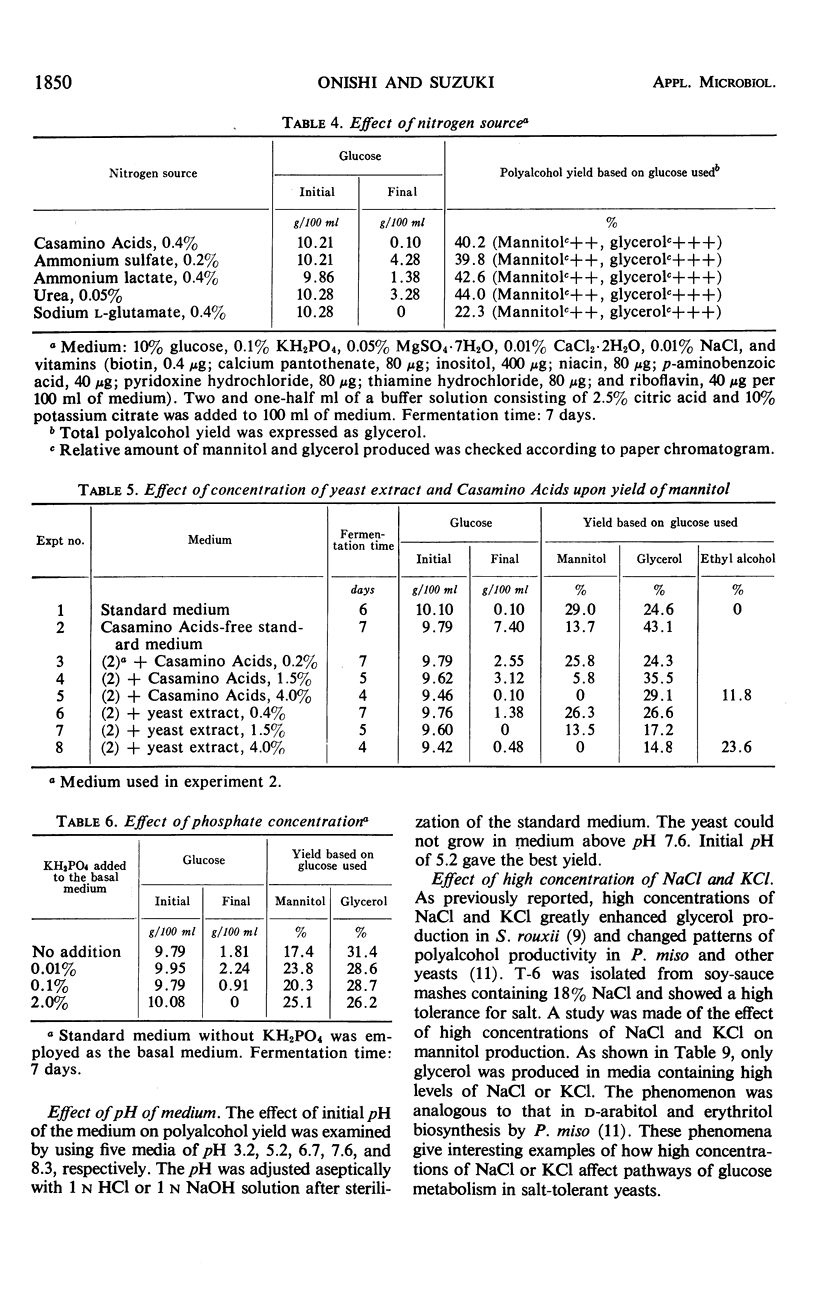
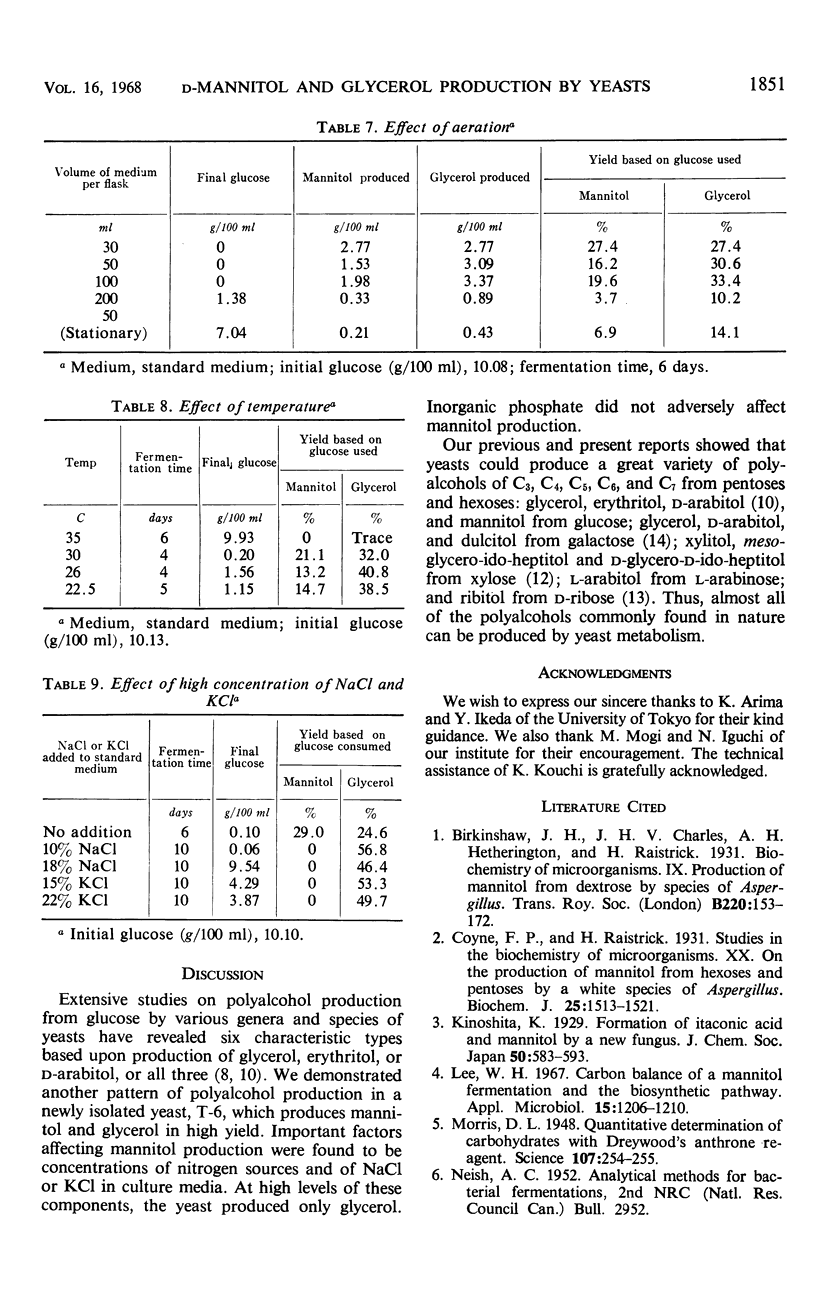
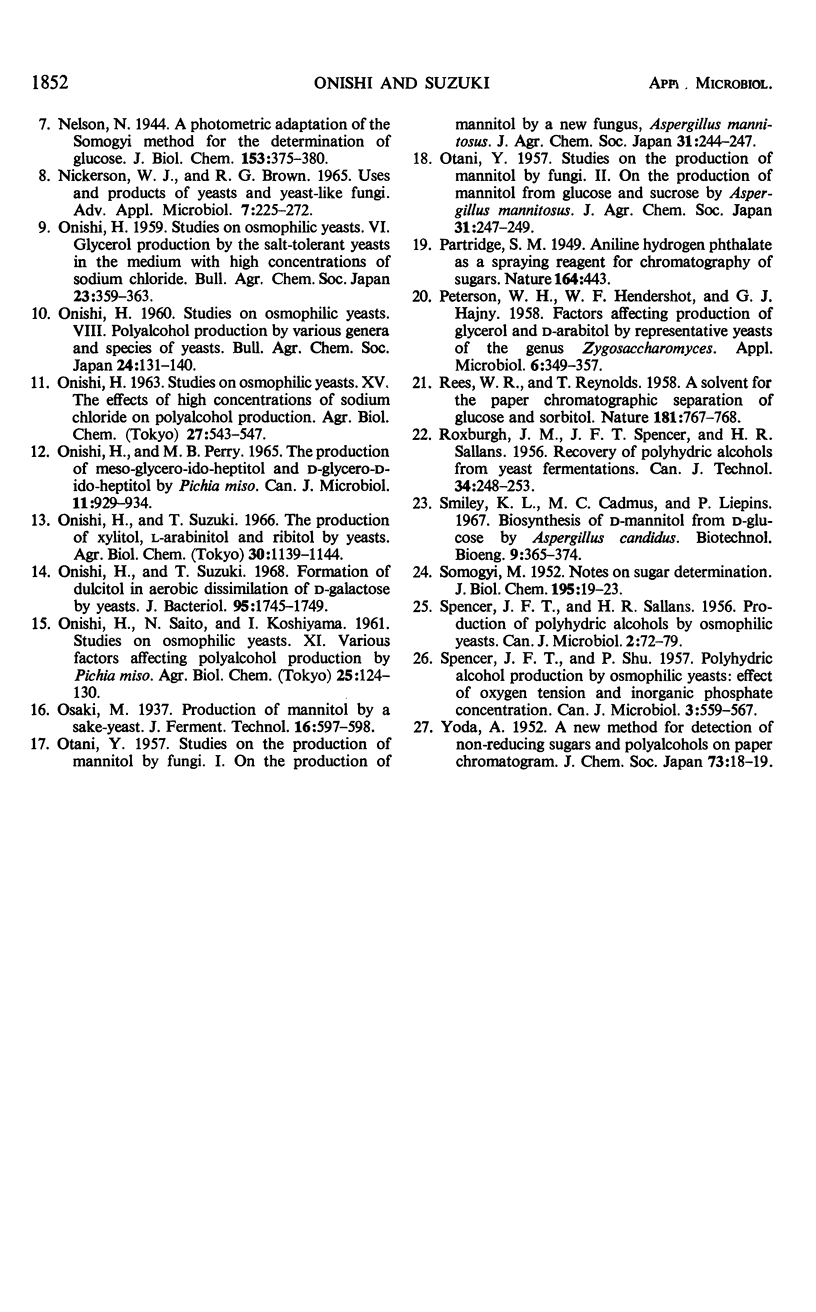
Selected References
These references are in PubMed. This may not be the complete list of references from this article.
- Coyne F. P., Raistrick H. Studies in the biochemistry of micro-organisms: On the production of mannitol from hexoses and pentoses by a white species of Aspergillus. Biochem J. 1931;25(5):1513–1521. doi: 10.1042/bj0251513. [DOI] [PMC free article] [PubMed] [Google Scholar]
- Lee W. H. Carbon balance of a mannitol fermentation and the biosynthetic pathway. Appl Microbiol. 1967 Sep;15(5):1206–1210. doi: 10.1128/am.15.5.1206-1210.1967. [DOI] [PMC free article] [PubMed] [Google Scholar]
- Morris D. L. Quantitative Determination of Carbohydrates With Dreywood's Anthrone Reagent. Science. 1948 Mar 5;107(2775):254–255. doi: 10.1126/science.107.2775.254. [DOI] [PubMed] [Google Scholar]
- Nickerson W. J., Brown R. G. Uses and products of yeasts and yeastlike fungi. Adv Appl Microbiol. 1965;7:225–272. doi: 10.1016/s0065-2164(08)70388-5. [DOI] [PubMed] [Google Scholar]
- Onishi H., Perry M. B. The production of meso-glycero-ido-heptitol and D-glycero-D-ido-heptitol by Pichia miso. Can J Microbiol. 1965 Dec;11(6):929–934. doi: 10.1139/m65-123. [DOI] [PubMed] [Google Scholar]
- Onishi H., Suzuki T. Formation of dulcitol in aerobic dissimilation of D-galactose by yeasts. J Bacteriol. 1968 May;95(5):1745–1749. doi: 10.1128/jb.95.5.1745-1749.1968. [DOI] [PMC free article] [PubMed] [Google Scholar]
- PETERSON W. H., HENDERSHOT W. F., HAJNY G. J. Factors affecting production of glycerol and D-arabitol by representative yeasts of the genus Zygosaccharomyces. Appl Microbiol. 1958 Sep;6(5):349–357. doi: 10.1128/am.6.5.349-357.1958. [DOI] [PMC free article] [PubMed] [Google Scholar]
- REES W. R., REYNOLDS T. A solvent for the paper chromatographic separation of glucose and sorbitol. Nature. 1958 Mar 15;181(4611):767–768. doi: 10.1038/181767a0. [DOI] [PubMed] [Google Scholar]
- SMOGYI M. Notes on sugar determination. J Biol Chem. 1952 Mar;195(1):19–23. [PubMed] [Google Scholar]
- SPENCER J. F., SALLANS H. R. Production of polyhydric alcohols by osmophilic yeasts. Can J Microbiol. 1956 Apr;2(2):72–79. doi: 10.1139/m56-011. [DOI] [PubMed] [Google Scholar]
- SPENCER J. F., SHU P. Polyhydric alcohol production by osmophilic yeasts: effect of oxygen tension and inorganic phosphate concentration. Can J Microbiol. 1957 Jun;3(4):559–567. doi: 10.1139/m57-061. [DOI] [PubMed] [Google Scholar]


